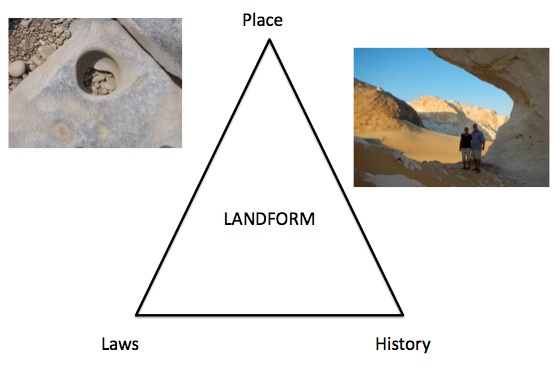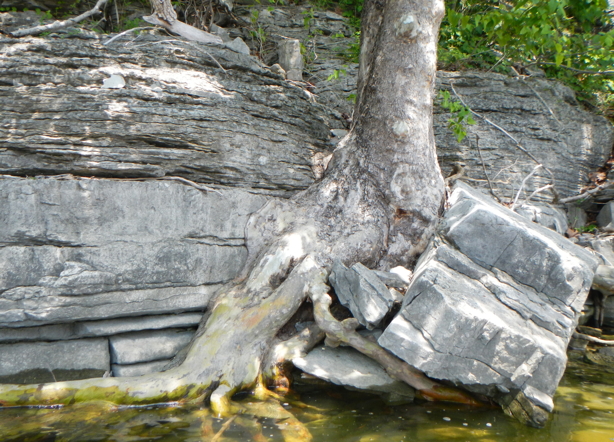THE TRIAD
Explaining and understanding Earth surface systems almost always requires some triangulation between three different sets of factors. The first, examples of which are shown on the lower left corner of the triangle below, are general principles and relationships that apply everywhere and always. Second, on the upper point, are environmental factors--characteristics of locations and regions such as climate, geology, etc. On the lower right of the triangle is the third set of factors, related to past events and time available for the system to develop.

This can be generalized as laws, place, and history, as shown below. 





